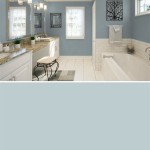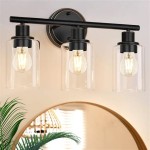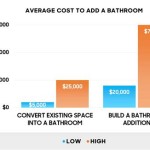Non-Slippery Tiles for Bathrooms: A Guide to Safe and Stylish Spaces
Bathrooms are one of the most essential rooms in a home. They are a place where we start and end our days, so it's important that they are both functional and stylish. One of the most important elements of a bathroom is the tiles. Not only do they impact the overall look of the space, but they also play a crucial role in safety and comfort.
When it comes to bathroom tiles, one of the most important factors to consider is slip resistance. Slippery tiles can be a major hazard, especially for children and the elderly. To ensure that your bathroom is safe, it's essential to choose non-slip tiles.
What is Slip Resistance?
Slip resistance is a measure of how resistant a surface is to slipping. It is determined by a number of factors, including the texture of the surface, the type of material used, and the presence of any coatings or treatments.
The higher the slip resistance of a tile, the less likely it is to cause someone to slip. Slip resistance is typically measured on a scale of 0 to 1, with 1 being the most slip-resistant. A slip resistance of 0.6 or higher is generally considered to be safe for use in bathrooms.
How to Choose Non-Slippery Bathroom Tiles
There are a number of different ways to choose non-slip bathroom tiles. Some tiles are naturally slip-resistant, while others can be made slip-resistant through the use of coatings or treatments.
Natural Slip-Resistant Tiles
Some types of tiles are naturally slip-resistant due to their texture. These tiles typically have a rough or textured surface that provides good traction.
Some examples of natural slip-resistant tiles include:
- Slate
- Sandstone
- Limestone
- Travertine
- Terra cotta
Coated or Treated Tiles
Other types of tiles can be made slip-resistant through the use of coatings or treatments. These coatings or treatments typically create a rough or textured surface that provides good traction.
Some examples of coated or treated tiles include:
- Porcelain tiles with a textured finish
- Ceramic tiles with a non-slip coating
- Glass tiles with a textured finish
- Metal tiles with a non-slip coating
Other Factors to Consider
In addition to slip resistance, there are a number of other factors to consider when choosing bathroom tiles.
- Durability: Bathroom tiles should be durable enough to withstand heavy traffic and frequent use.
- Water resistance: Bathroom tiles should be water resistant to prevent moisture from seeping through and damaging the subfloor.
- Style: Bathroom tiles should complement the overall style of the bathroom.
Conclusion
Choosing the right bathroom tiles is essential for creating a safe, stylish, and comfortable space. By considering the factors discussed in this article, you can select the best tiles for your needs and create a bathroom that you will love for years to come.

Anti Skid Tiles For Bathroom Kitchen Slip Floor Orientbell

6 Reasons To Select Non Slip Bathroom Floor Tiles By Agl

Non Slip Bathroom Floor Tiles Manufacturers And Suppliers Whole Hanse

Best Nonslip Shower Floor Tile Ideas 2024 Updated Page Country Floors

Anti Skid Tiles Types Uses S In 2024 Maintenance Tips Benefits

How To Get A Fabulous Bathroom Floor Tiles Within Your Budget

Non Slip Tiles For Bathroom Texture

The Best Anti Slip Floors For Your Bathroom

Anti Skid Tiles For Bathroom Kitchen Slip Floor Orientbell

How To Get A Fabulous Bathroom Floor Tiles Within Your Budget
See Also







